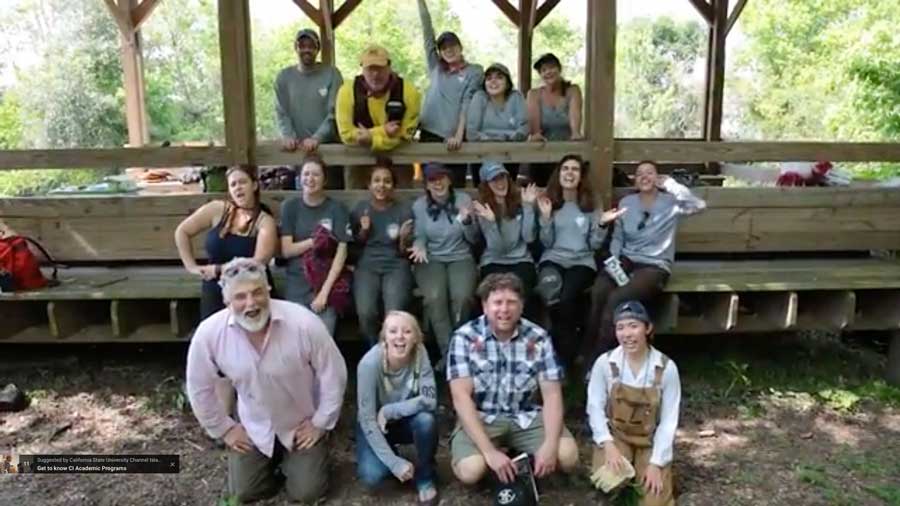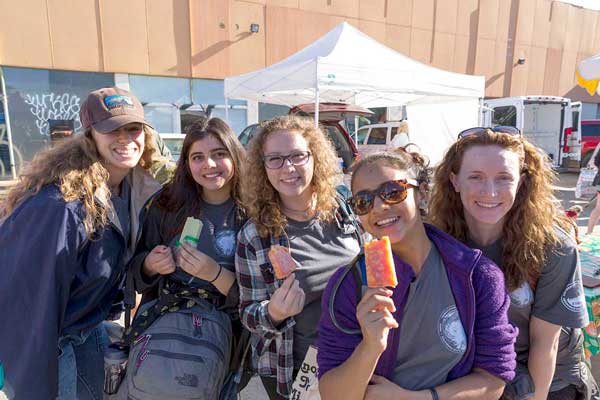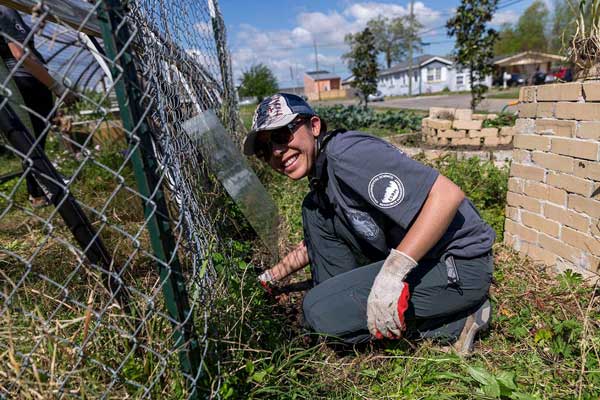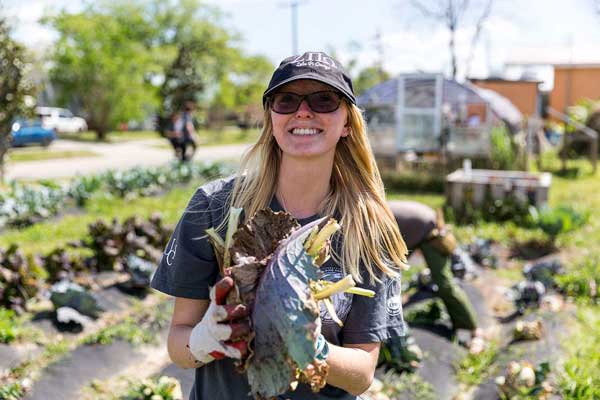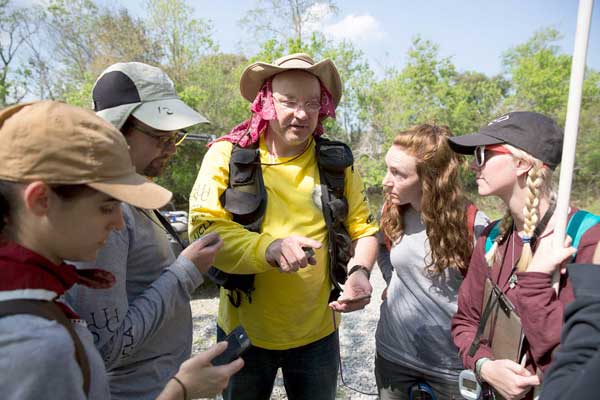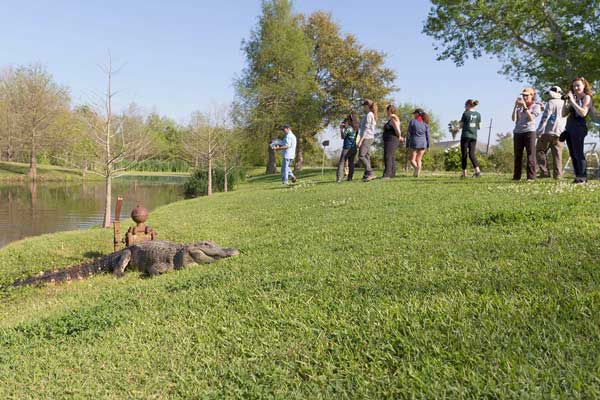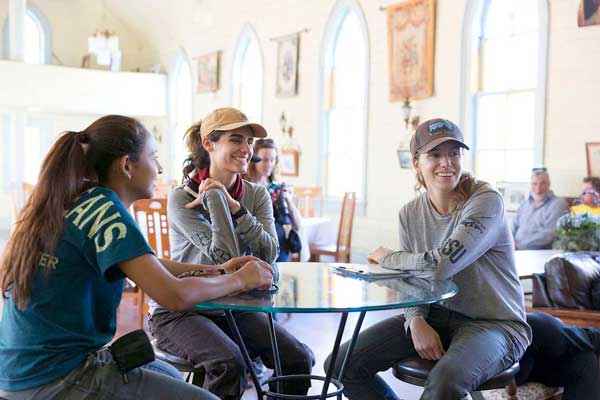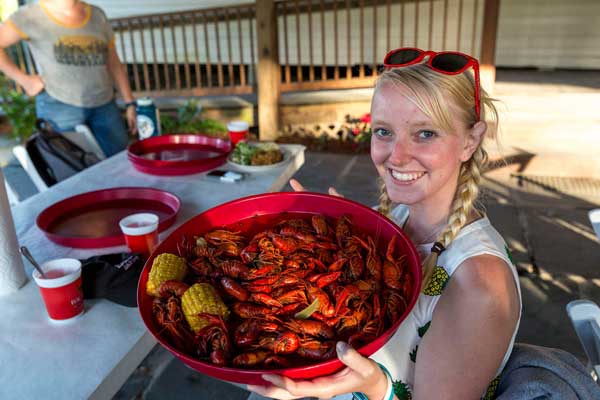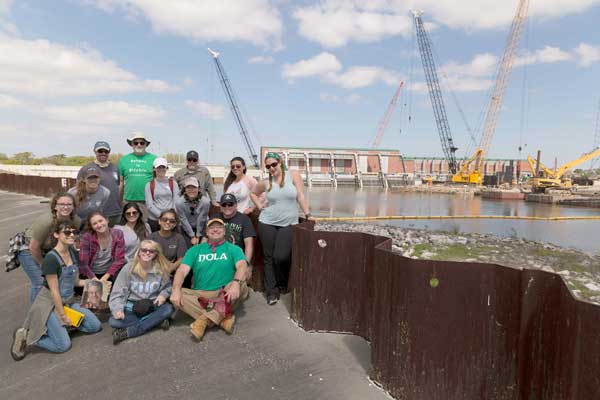By Kim Lamb Gregory
The thick morning air hummed with insects as Jeyla Fendi’s boots crunched through the wetlands south of New Orleans. She hacked away underbrush with her machete, wiped sweat from her forehead and returned to counting trees with her classmates.
Fendi was among 12 students who traveled to New Orleans with Environmental Science & Resource Management (ESRM) Professor Sean Anderson, who started this annual tradition in the wake of Hurricane Katrina striking New Orleans in 2005.
The Category Five juggernaut killed more than 1,500 people in Southern Louisiana, doing $81 billion in damage and leaving an environmental crisis that persists nearly 12 years later.
The wetlands were inundated with invasive species of plants and trees and the coast was drastically eroded, washing away the natural buffer New Orleans had against the Gulf of Mexico.
“If you face south from the wetland forest where the students work, it used to be about 62 miles of wetland to get to the open waters of the Gulf,” Anderson said. “Now it’s only about 14 miles.”
One of the students’ projects has been to collect data on native versus invasive species of trees and plants in the damaged area. Anderson says the data is unparalleled.
“We have the only long-term data set,” confirmed Anthropology major Lauren Wilson. “We are the only ones who have returned every single year since the event. We are documenting which tree species are surviving and which kinds are taking over.”
Anderson said the data the students have collected is unmatched by any other research team. Each trip is different each year, depending on what is needed by the communities they serve. Besides conducting research, students have helped rebuild homes, cleared overgrown pathways and planted sustainable hydroponic gardens in the devastated Ninth Ward.
Every day, the students are up at dawn, working in the wetlands, touring museums, talking with conservation experts or perhaps watching one of the local characters feed Ahi steaks to a seven-foot long alligator named Boots.
At night, the students can rest, journal and input their research data, or immerse themselves in New Orleans night life with visits to restaurants or jazz clubs.
We go and hear people's stories of Katrina, and you know what you're doing means a lot to these people.
Jeyla Fendi
“We went to cooking school, we went to the farmers market,” Fendi said. “They let us loose to go cook. I taught myself how to make jambalaya.”
Now that she’s back, Fendi knows why other students who have gone on the annual New Orleans service-learning trip say it transformed them.
“It’s really fast, really emotional,” said Fendi, who graduated in May with an ESRM degree. “You work really hard and it’s really hot. We go and hear people’s stories of Katrina, and you know what you’re doing means a lot to these people.”
Wilson said the trip changed her, compelling her to seek for other ways to help others.
“It was intense, it was emotional,” she said. “It was the best time of my life.”
© Spring 2017 / Volume 21 / Number 01 / Bi-annual

